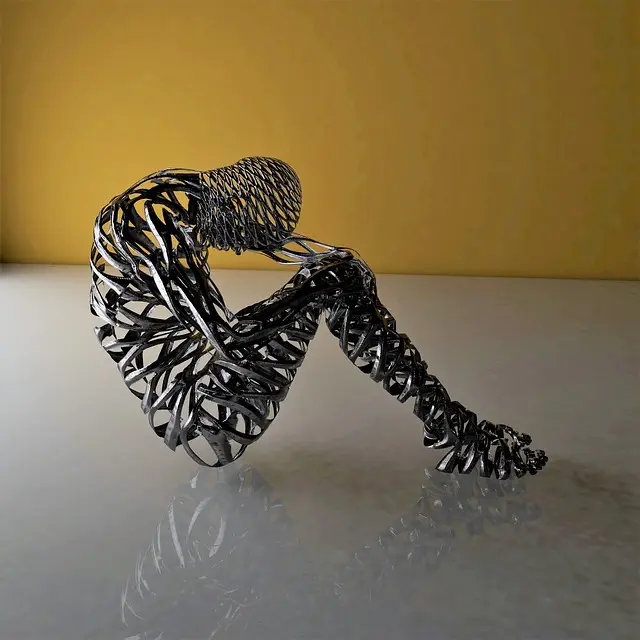The article examines anxiety disorders, their symptoms, and the importance of comprehensive treatment strategies that often include a combination of therapy, medication, and alternative approaches like Kratom. Kratom, derived from the Mitragyna speciosa plant, is recognized for its potential to relieve muscle tension and alleviate anxiety through its alkaloids' interaction with opioid receptors in the brain. It offers a calming effect without significant sedation, which can be beneficial for managing symptoms of anxiety. However, it's essential to consult healthcare professionals before using Kratom due to potential side effects and the need for precise dosing under medical supervision. The article suggests that integrating Kratom with cognitive-behavioral therapy, exercise, or other therapeutic interventions can form a holistic treatment plan. Additionally, the combination of Kratom with muscle relaxation techniques like progressive muscle relaxation (PMR) can amplify its therapeutic benefits by addressing both the physical and psychological aspects of anxiety disorders. This comprehensive approach should be personalized under professional guidance to ensure safe and effective management of anxiety symptoms within legal frameworks.
Anxiety disorders present complex challenges, often accompanied by persistent muscle tension that can exacerbate the mental strain. This article delves into the interplay between anxiety and muscle relaxation, highlighting the potential benefits of incorporating Kratom as a complementary approach within supportive strategies. We will explore how Kratom intersects with muscle relaxation techniques to alleviate symptoms associated with these disorders, emphasizing its role in holistic treatment plans. Join us as we examine the science and practice behind using Kratom responsibly to aid those navigating the trials of anxiety disorders, with a particular focus on the physical aspects of relief it may offer.
- Understanding Anxiety Disorders and the Role of Muscle Relaxation in Treatment
- Exploring the Benefits of Kratom for Anxiety Management and Muscle Tension Ease
- Integrating Kratom Responsibly into Support Strategies for Anxiety Disorders with a Focus on Muscle Relaxation Techniques
Understanding Anxiety Disorders and the Role of Muscle Relaxation in Treatment

Anxiety disorders encompass a range of conditions characterized by frequent feelings of anxiety, worry, or fear that interfere with daily functioning. These include generalized anxiety disorder, panic disorder, social anxiety disorder, and others. A nuanced understanding of these disorders is crucial for effective treatment, which often involves a combination of therapy and medication. In this context, the role of muscle relaxation techniques has gained attention as a complementary approach to managing anxiety symptoms. Muscle tension is frequently associated with heightened states of anxiety, making relaxation strategies a key component in alleviating these physical manifestations. Among the various methods available, some individuals find relief through the use of natural supplements like Kratom, which has been reported to have muscle relaxant properties. Kratom interacts with the body’s opioid receptors, potentially providing a calming effect that can reduce muscle tension and ease stress. It is important for individuals considering Kratom to consult healthcare professionals due to its potential side effects and the need for proper dosage under medical supervision. Additionally, when combined with cognitive-behavioral therapy, structured exercise, or other therapeutic interventions, muscle relaxation techniques, including those involving Kratom, can form a holistic and supportive treatment plan for anxiety disorders. This multi-modal approach allows for personalized care that addresses the complex nature of these conditions, offering individuals a variety of tools to manage their symptoms effectively.
Exploring the Benefits of Kratom for Anxiety Management and Muscle Tension Ease

Kratom, a botanical derivative from the leaves of Mitragyna speciosa, has garnered attention in various circles for its potential therapeutic effects, particularly in managing anxiety and alleviating muscle tension. Users reporting on kratom’s benefits often cite its role in providing relaxation without the sedative side effects commonly associated with pharmaceutical anxiolytics. The alkaloids present in kratom, such as 7-hydroxymitragynine and mitragynine, are believed to interact with the brain’s receptors, including opioid receptors, which may contribute to its calming effects. This interaction can lead to a sense of well-being and help in managing symptoms of anxiety.
For individuals grappling with muscle tension, kratom is noted for its ability to induce muscle relaxation, a property that can be particularly beneficial for those with stress-induced or chronic muscle tightness. The analgesic properties of kratom are thought to be responsible for this effect, offering relief from discomfort and promoting a state of physical ease. It’s important for individuals considering the use of kratom to approach it responsibly, adhering to recommended dosages and consulting with healthcare professionals. This is crucial as the effects of kratom can vary widely among users due to factors like individual physiology and the specific strain of kratom consumed. Additionally, the regulatory status of kratom varies by region, underscoring the necessity for informed decision-making within the legal frameworks governing its use.
Integrating Kratom Responsibly into Support Strategies for Anxiety Disorders with a Focus on Muscle Relaxation Techniques

Kratom, a plant originating from Southeast Asia, has garnered attention for its potential benefits in managing symptoms associated with anxiety disorders, particularly in relation to muscle relaxation. When considering the integration of kratom into support strategies for those grappling with anxiety, it is imperative to approach its use with caution and under professional guidance. Kratom contains alkaloids that may interact with the body’s stress response system, potentially offering a calming effect that can aid in muscle relaxation. However, due to its complex pharmacology, it is crucial to consult healthcare providers before incorporating kratom into any treatment regimen.
Muscle relaxation techniques are often employed alongside kratom to enhance the overall therapeutic experience for individuals with anxiety disorders. Techniques such as progressive muscle relaxation (PMR) can be particularly effective when combined with kratom’s soothing properties. PMR involves tensing and then relaxing different muscle groups, a process that can help reduce tension and alleviate stress. This method, when used in conjunction with kratom, may provide a more holistic approach to managing anxiety-related symptoms and promoting a state of calmness. It is essential to note that while these techniques can be beneficial, they should complement professional care rather than replace it. The responsible use of kratom within a comprehensive support strategy, tailored by healthcare professionals, can offer a path toward improved well-being for those with anxiety disorders.
In conclusion, anxiety disorders present complex challenges that significantly impact an individual’s quality of life. A nuanced understanding of these conditions, coupled with targeted therapeutic approaches such as muscle relaxation, plays a pivotal role in their management. The emerging evidence on Kratom’s potential benefits for anxiety management and its synergistic effects with muscle relaxation techniques offers a promising avenue for comprehensive support strategies. It is imperative to approach the use of Kratom responsibly within a holistic treatment plan, ensuring that patients receive appropriate guidance from healthcare professionals. By integrating these approaches thoughtfully, individuals with anxiety disorders can find relief and improved well-being, paving the way for a more balanced and fulfilling life.






